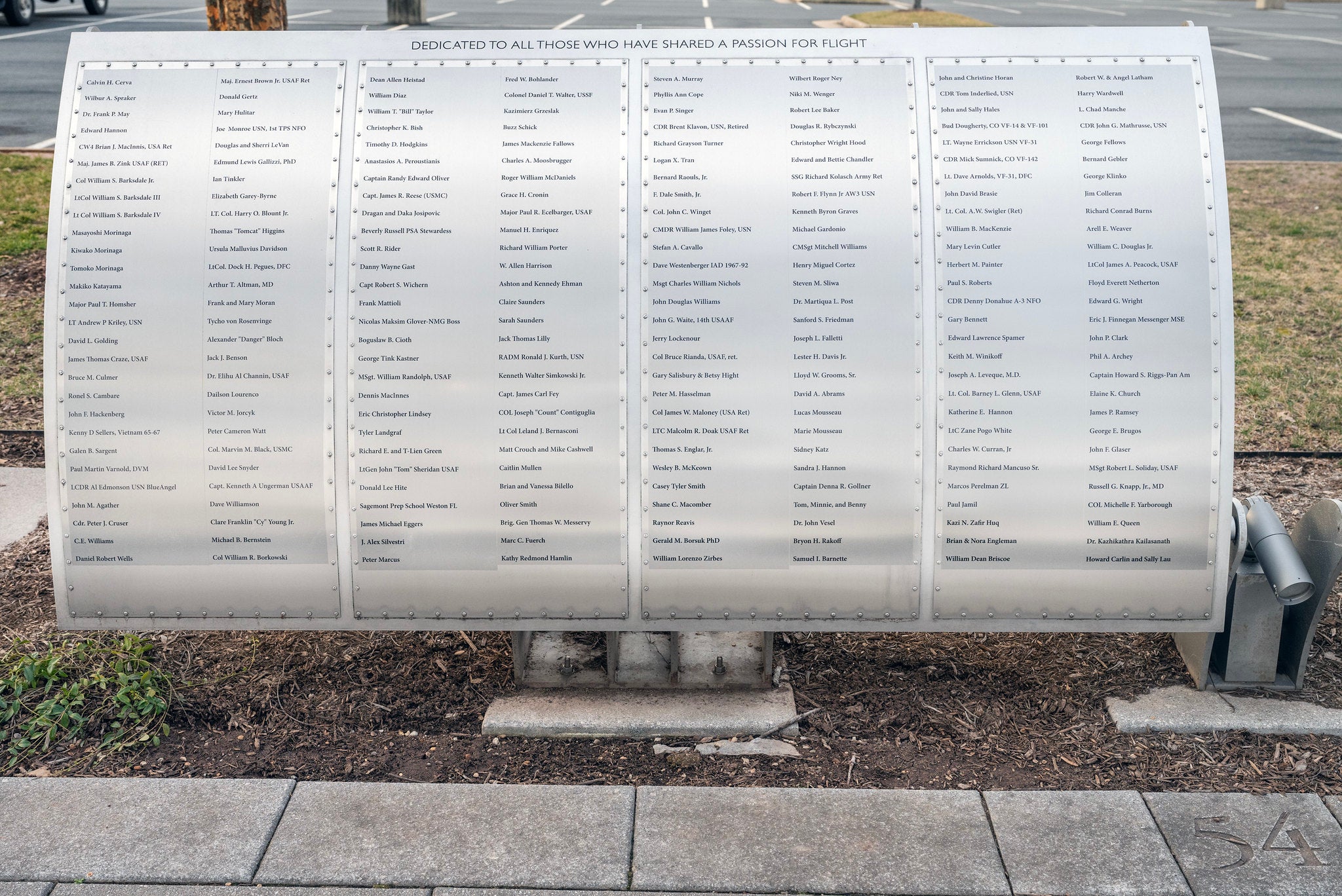Foil: 54 Panel: 2 Column: 1 Line: 16
Wall of Honor Level: Air and Space Sponsor
Honored by:
Alex Cioth
Boguslaw “Bogie” Cioth’s career as a mechanical engineer spanned several exciting and vital phases of America’s space program.
From the early 1960s to the late 1980s, Bogie made important contributions to the Apollo moon missions, the Apollo-Soyuz joint venture with the Russians, and the American satellite initiatives. His name is among those commemorated with a plaque placed on the moon!
Bogie Cioth was born in Warsaw, Poland. After World War II, he lived his young adult years in England. Bogie’s lifelong love of drawing and machines led to his pursuit of a mechanical engineering degree. He graduated from the University of London in 1955. He also studied nuclear engineering for a brief stint at Harwell Reactor School near Oxford.
After immigrating to America in 1957, Bogie worked at companies in Illinois and in Michigan before moving to California. In the 1960s, major aerospace companies in Southern California needed many talented and dedicated engineers to realize America’s mission of a safe moon landing. Starting in 1963, Bogie worked for North American Rockwell Corporation. He worked on the super-heavy carrier rocket, Saturn V, which was used in all Apollo flights from 1967 to 1973. Bogie redesigned the purging system, which prevented inadvertent mixing of hydrogen and oxygen, preventing an explosion. He also worked on the insulation of the Saturn vehicles. The rocket launches to the moon required monitoring performance throughout the flight; Bogie participated in monitoring of Rockwell systems.
Apollo 16 was launched on April 16, 1972. On that flight, the astronauts took up a plaque with a microfiche containing the signatures of the engineers who worked on the program and left the plaque on the moon. Bogie’s signature is one of them.
The next project Bogie worked on was Apollo-Soyuz, a joint venture with the Russians. Details of his work are undisclosed but the impact of the joint venture is well documented. The principal goal of the Apollo-Soyuz Test Project, the world's first international crewed space flight, was to test compatible rendezvous and docking systems for crewed spacecraft. The Apollo-Soyuz Test Project marked a brief thaw in the Cold War and the first time that the two global superpowers cooperated in a crewed space mission. It was science diplomacy in action. During nearly two days of joint activities in July 1975, the mission's three U.S. astronauts and two Soviet cosmonauts carried out five joint experiments and exchanged commemorative items. The success of the Apollo-Soyuz Test Project laid a foundation for future international partnerships. Bogie’s gift for languages was extremely useful (he became fluent in English and Italian, in addition to his native Polish) as he taught himself Russian in order to assist with the translation of technical documents and to facilitate communication between American and Russian scientists and engineers with whom he was collaborating.
In 1978, the Space and Communication Division of Hughes Aircraft Company hired Bogie to design a heater system for satellite propulsion components. He successfully improved on prior designs. Subsequently, as Section Head, he was in charge of design and testing of the components, awarding contracts to subcontractors and assisting in writing proposals and reports.
In 1989, Bogie was promoted to Senior Scientist and asked to focus on solutions for unusual and challenging problems. He enjoyed those projects until his retirement at the end of that year.
In his personal life, Bogie was married to Helena Sokolowska for 61 years until her passing in 2014. Together they raised four children and doted on 10 grandchildren. Bogie passed on to his family a love of science and space. He enjoyed teaching his children tennis, enabling them to successfully compete on the local and national level. In retirement, Bogie took up golf and became a prolific painter, completing hundreds of landscapes and portraits, many of which he displayed and sold at community art shows.
Wall of Honor profiles are provided by the honoree or the donor who added their name to the Wall of Honor. The Museum cannot validate all facts contained in the profiles.
Foil: 54
